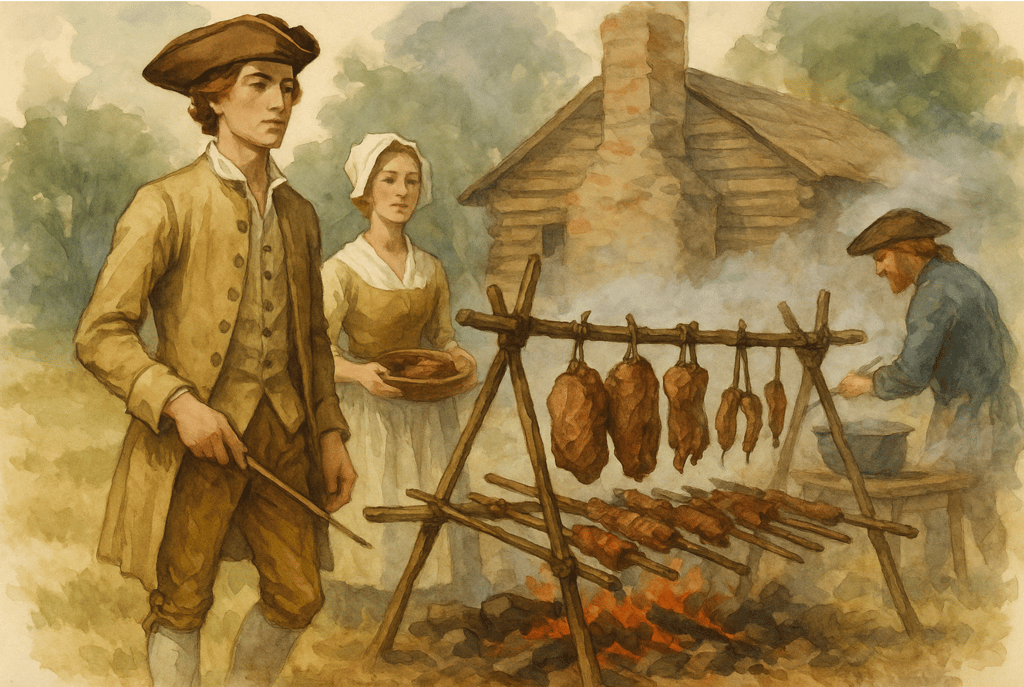Colonial Barbecue History: From Barbacoa to Backyard Feasts
Uncover colonial barbecue history - from Taíno barbacoa to 19th century feasts, tracing how smoke and slow cooking became a timeless tradition.
FOOD HISTORY & TRADITIONS


At Hida Dream Home, we love to trace the foods we enjoy today back to their roots - those slow, winding paths through history that turn a simple meal into a story. And when it comes to the smoky, sizzling heart of summer - the barbecue - its origins reach far deeper than most of us realise.
Before there were backyard grills or tangy sauces, before the word “barbecue” became shorthand for summer gatherings, there was barbacoa - a cooking technique developed by the Taíno people, Indigenous to the Caribbean islands. For the Taíno, barbacoa was a way to cook slowly, over a wooden rack suspended above low-burning coals. The smoke helped preserve meat in the tropical heat, kept insects at bay, and infused each bite with a rich, earthy flavour that no boiled or roasted meal could match.
When Spanish colonists arrived in the late 15th century, they were captivated by this technique — and the taste. They adopted the practice and the word, carrying it from the Caribbean to the mainland Americas. Over time, as colonists, Indigenous peoples, and enslaved Africans mingled and shared culinary traditions, barbacoa transformed. It became less about necessity and more about flavour and fellowship. The cooking pits deepened. The spices grew bolder. And the communal meals became central to colonial life, particularly in the American South.
By the 18th and 19th centuries, “barbecue” had evolved into a word used for both the method and the event. Large social gatherings - sometimes feeding hundreds - revolved around whole animals roasted slowly over wood, often as a way to celebrate holidays, political rallies, or harvests. These weren’t quick affairs; the process took hours, sometimes days, and the shared labour of tending fires and preparing sides turned the meal into a ritual.
Fun fact: Early European travellers often misinterpreted barbacoa entirely. Some thought the wooden racks were beds for sleeping, not for cooking, which led to “barbecue” occasionally being used in English to mean an outdoor structure or frame, long before it became synonymous with food.
What makes barbecue so enduring is its adaptability. While the heart of it - slow cooking over smoke and wood - remains, every culture it touched made it their own. Enslaved Africans introduced spice rubs, sauces, and techniques passed down through generations. European settlers added vinegars, mustards, and pork as staple proteins. And Indigenous traditions kept the focus on woodsmoke, earth pits, and community.
Today’s backyard barbecues, with their briskets, ribs, burgers, and marinades, might look far removed from those first Taíno fires, but the spirit is the same. Barbecue has always been about more than the food. It’s about slowing down, gathering together, and letting the scent of woodsmoke wrap itself around the day.
So, the next time you light a grill or sit down to a plate of smoky ribs, remember the journey. Every wisp of smoke carries a history - from the Caribbean’s barbacoa to colonial pits, to the modern ritual of sharing fire, flavour, and time under the open sky.
